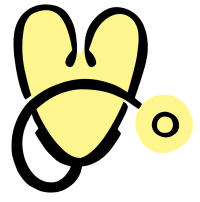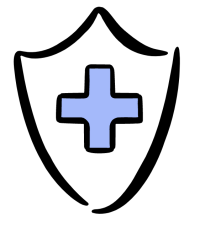The Stride Guide to Special Enrollment
What's the deal with Special Enrollment?
In most cases, you can only enroll in health insurance during the yearly Open Enrollment Period (OEP), which typically begins November 1 and ends January 15. But if you have what’s called a “qualifying life event,” you may be eligible for a “Special Enrollment Period” (SEP), which lets you enroll or switch health insurance plans outside of Open Enrollment.
Do I have a qualifying life event?
While the qualifying events listed below vary in nature, most have one thing in common: You need to have had health insurance prior to the qualifying event in order to be eligible for SEP. There are a few instances where this is not the case, and these are noted below.
Some of the most common qualifying life events for health insurance coverage include:
- You lose your job-based coverage: This happens when you lose health insurance coverage through your company or spouse’s company, regardless of whether your employer terminated your job or you quit. Just note that losing coverage because you didn’t pay your premium does not qualify you for SEP.
- Your employer offers to help with the cost of coverage: If your employer provides access to an Individual Coverage Health Reimbursement Arrangement (ICHRA) or Qualified Small Employer Health Reimbursement Arrangement (QSEHRA), you may be able to enroll in coverage or change your plan.
- You turn 26 and lose coverage through your parent’s plan: With the creation of the Affordable Care Act, people are allowed to stay on a parent’s health insurance plan until they turn 26. Under the ACA, 26 is when you become responsible for your own health insurance. Keep in mind, if you are not on a parent’s health insurance plan, turning 26 is not a qualifying event for you.
- You lose your eligibility for Medicaid, CHIP, or Medicare: If you’ve been eligible for this type of coverage and lose that eligibility (for instance, during the Medicaid redetermination period), you may be eligible to enroll in Affordable Care Act marketplace coverage.
- You have a baby or adopt a child: Having a baby or adopting a child is considered a change in household and makes you eligible for SEP. If you already have coverage, you can add your dependent to your plan, or you can switch to a new plan as long as you add the child to it. If you didn’t have coverage before, you can’t enroll yourself in a plan, but you can enroll your dependent.
- You get married or divorced: While you might be more focused on celebrating your marriage, getting insurance figured out with your new spouse should be one of your top priorities. If you don’t have coverage, you can join your spouse’s plan (and same goes for the reverse). In addition, if either of you want to make a change in coverage and find a new plan, this is the time to do it. Getting a divorce or legally separated also qualifies you for SEP. However, you are only eligible for SEP through a divorce if you lose existing coverage because of the divorce.
- You have a death in the family: If you lose coverage because of a death in your family, you can enroll in health insurance outside of OEP. Additionally, if your dependents lost coverage due to the death, you can change your plan to cover them. Lastly, if you aren’t eligible for your plan any more because of the death of someone on the policy, you are eligible for SEP.
- You permanently move to a new zip code or county: If you move to a new zip code within your state, you may be eligible for an SEP if there are different plans available or your old plan is no longer offered. If you move to a new state, you’ll always qualify for an SEP.
- Your income changes significantly, making you newly eligible (or ineligible) for financial help: “Advanced Premium Tax Credits,” or APTCs, are funds from the government to help lower the cost of your monthly insurance costs, and they’re tied to your income. If your income changes enough that you now qualify for a subsidized price or you lose your existing subsidy, you can shop for a new health plan.
- You experience domestic abuse or your spouse abandons you: The State of California provides many domestic violence resources. Among them is a Special Enrollment Period so you and your children can get health insurance separate from your spouse. If your spouse abandons you, this is also a Qualifying Life Event.
- You gain U.S. citizenship or lawful presence: This is one of the qualifying events for health insurance in which you don’t need to have had previous coverage in order to be eligible for SEP. If you gain U.S. citizenship, become a U.S. national, or become lawfully present in the U.S., you are eligible for SEP because you are considered newly eligible to purchase coverage from the exchanges.
- You are or gain status as an American Indian or Alaska Native: This is another one of the qualifying events for health insurance in which you don’t need to have had previous coverage in order to be eligible for SEP. You can enroll in a plan or switch plans at any point during the year.
- You leave incarceration: This is yet another one of the qualifying events in which you don’t need to have had previous coverage in order to be eligible for SEP.
Californians Have More Qualifying Life Events
In addition to all of the above events, California residents have additional opportunities to qualify for a Special Enrollment Period.
- You expect to earn less than $41,625 (for a family of four) in 2023: People who earn less than a certain income this year can enroll outside of Open Enrollment. The cut-off depends on how many people are in your household.
- One person must earn less than $20,385.
- Two people must earn less than $27,465 (combined).
- Three people must earn less than $34,545 (combined).
- Four people must earn less than $41,625 (combined).
- A pandemic or national public health emergency is called: During a disaster, pandemic, or a similar situation, the government might issue a state or national health emergency.
- You paid the penalty for not having health insurance: California charges residents a penalty if they didn’t have health insurance last year. This penalty is called the Individual Shared Responsibility Penalty. When you pay this penalty (usually when you file your taxes in April), your SEP will begin.
- You’ve been affected by wildfires or another publicly declared state of emergency: If you personally have been affected by a disaster (like a wildfire), you could qualify for a Special Enrollment Period. The disaster must result in the governor declaring a state of emergency. If you’re in this situation, you can enroll as soon as the state of emergency is announced.
- You qualify for an app-based driver stipend for the first time: People who drive for delivery or rideshare apps like Uber, DoorDash, Lyft, and Grubhub could qualify for a Special Enrollment Period. A Qualifying Life Event applies if you:
- Start driving for an app: Your SEP begins the day you join the app and runs for 60 days.
- Increase your hours and expect to receive a health care stipend: The app you drive for will send you a notice if this applies to you, and your SEP begins right away.
The Fine Print
There are a few things you should keep in mind when it comes to qualifying life events for health insurance.
You have limited time. You only have 60 days before the qualifying event and 60 days after the qualifying event to get enrolled. If you don’t do it within this timeframe, you will need to wait until the next OEP to enroll in a plan.
With a new baby or adoption, your coverage can be back-dated. Coverage for dependents is retroactive to the day of the event, meaning that it’s back-dated to the date in which you gave birth or the adoption went through.
You need proof of the qualifying life event. The type of documentation that you will need to show proof of eligibility will vary based on the qualifying event you are claiming.
What’s Next?
If you’ve determined that you have experienced one of the qualifying events for health insurance (or will within the next 60 days), be sure to start shopping for your plan now. Stride is here to help you find the right plan at the lowest possible prices.
If you don’t have a qualifying event and can’t enroll in health insurance right now, you can still protect yourself and your family with dental, vision, and life insurance — you can enroll in this type of coverage any time of year, and in most case start using your coverage the following month.
With insurance through Stride:





